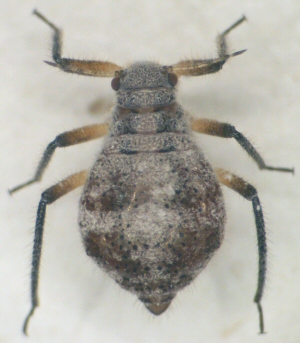Conifer Aphid
 Scientific Name
Scientific Name
Cinara sp.
Host
This aphid is found on the twigs and small branches of pine trees. It has been found on shortleaf and slash pines in Oklahoma. It is reported from loblolly, shortleaf, slash, spruce, and pond pines in Florida and red, pitch, Scotch, and Virginia pines in Pennsylvania.
Symptoms
This aphid is seldom found in large numbers, and reports of damage caused by this aphid are rare. Several related species occasionally damage pines or other conifers in some areas of the United States. It is possible that heavy numbers could cause some twig dieback. These aphids are known to produce large amounts of honeydew on which sooty mold often develops.
Life Cycle
The life cycle of this aphid is not well known but appears to be somewhat similar to that of C. tujafilina on arborvitae. They probably spend the summer months (July to September) as eggs on the bark, or perhaps roots, of pines. They are present on pine twigs and branches from October to May and sometimes into June or even July. They reproduce and feed whenever temperatures allow, probably producing several generations in mild winters. They can tolerate relatively low temperatures, but many are probably killed when temperatures drop much below 10 F.
Description
This is a relatively large aphid with adults ranging up to 1/ 8 inch long. It is grayish brown in color with numerous small black dots on the abdomen and black legs. There is a wide pale yellowish band at the middle of the tibiae on the second and third pairs of legs. The cornicles are broad, short, and cone-shaped. Nymphs are similar to adults but smaller. There are four other species of Cinara which might be found in Oklahoma. Two of these, C. tujafilina and C. idahoensis, are found only on arborvitae. C. pinivora is found on pines but has a broad, pale band on all three pairs of tibiae. C. braggii might be found on pines but has pale femora.
Control
Please contact your local county extension office for current information.

